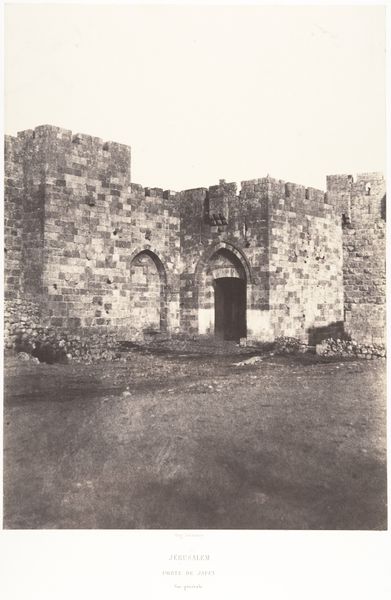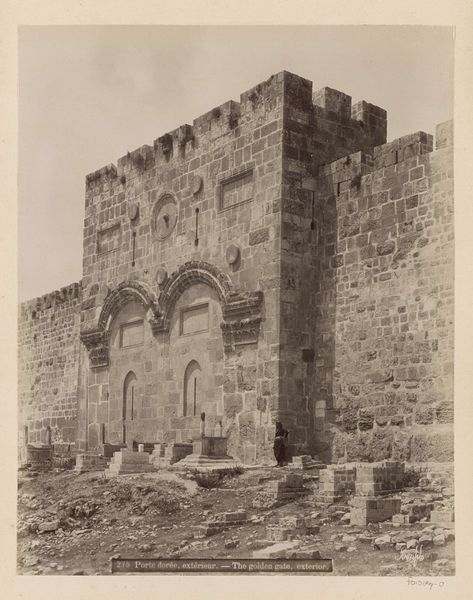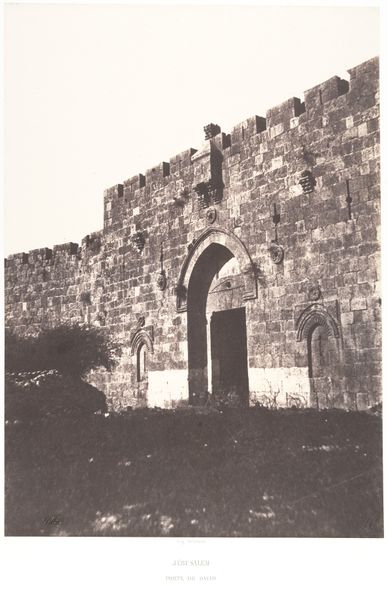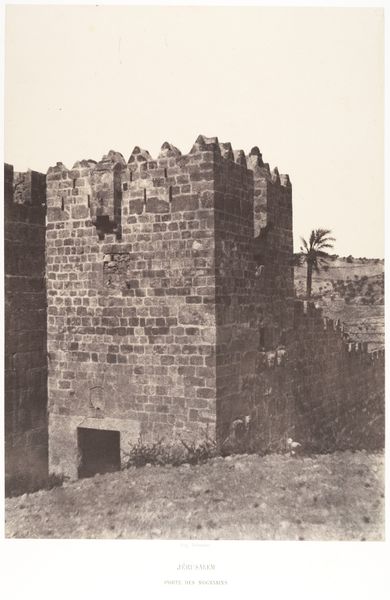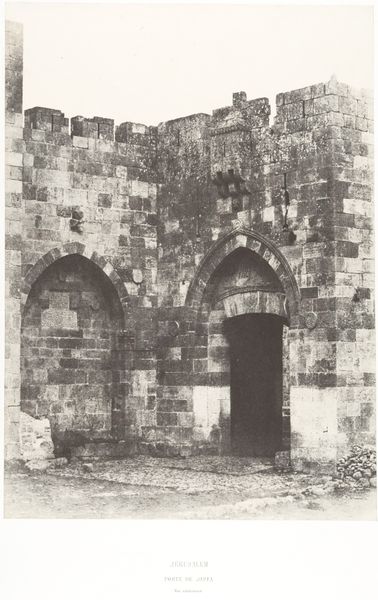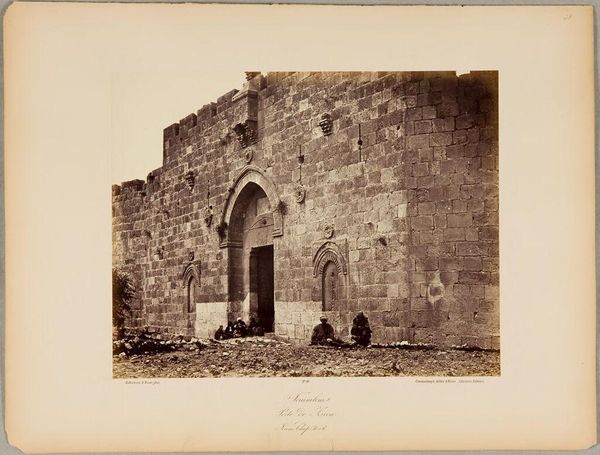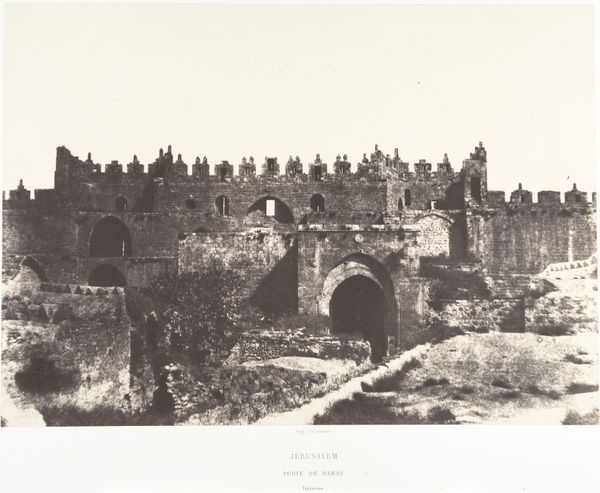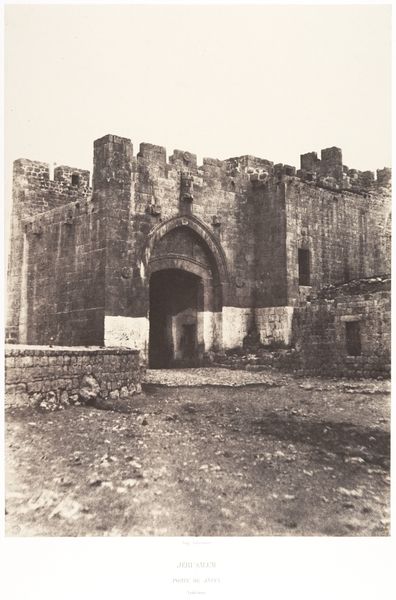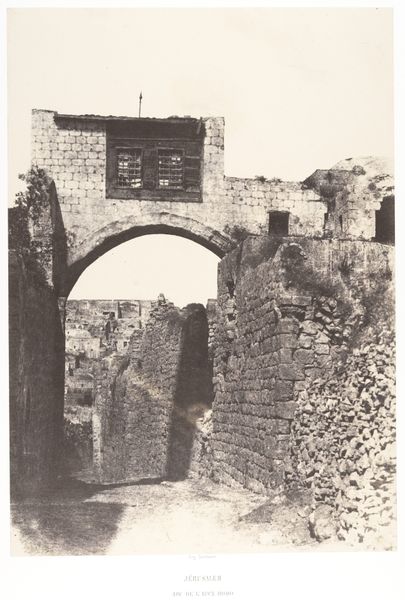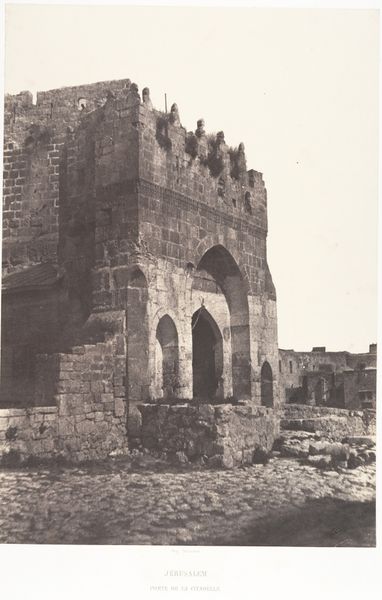
albumen-print, photography, albumen-print, architecture
#
albumen-print
#
landscape
#
historic architecture
#
photography
#
ancient-mediterranean
#
cityscape
#
islamic-art
#
albumen-print
#
architecture
#
realism
Dimensions: 8 3/4 x 11 1/8 in. (22.23 x 28.26 cm) (image)11 x 14 in. (27.94 x 35.56 cm) (mount)
Copyright: Public Domain
Editor: Here we have "Porte de Jaffa," or Jaffa Gate, by Félix Bonfils, dating to the 1870s. It's an albumen print, sepia toned. I’m struck by the texture of the stone – you can almost feel it. How do you see this work? Curator: I see a photograph deeply rooted in its material production. Albumen prints like this weren't just about capturing an image, they were about industrial processes. Think about the sheer labor involved in preparing the glass plates, the chemicals, and the albumen itself - often sourced from massive quantities of eggs! Editor: Wow, eggs! I never thought about that. So, you're saying the *making* of the photo is as important as the picture itself? Curator: Absolutely. Consider the colonial context. Bonfils, a European photographer, is capturing the "Orient" for Western consumption. The photograph becomes a commodity, packaged and sold, reinforcing particular views of the Middle East. This print then is a result of the technology, the photographer's labor, and the demand of the market. Editor: So the image itself becomes less about the actual Jaffa Gate and more about this whole system of production and consumption? Curator: Precisely! It forces us to question whose gaze is privileged, and how this seemingly objective image is actually shaped by social and economic forces. Are we looking at a representation of Jerusalem, or are we looking at the tangible remains of colonial desires materialized through photographic chemistry? Editor: That really changes my perspective. I was just looking at the stonework! Now, I'm considering the work, labour, commerce, and perspective. Curator: Exactly! Considering the material conditions and social context enriches our understanding of art.
Comments
No comments
Be the first to comment and join the conversation on the ultimate creative platform.
